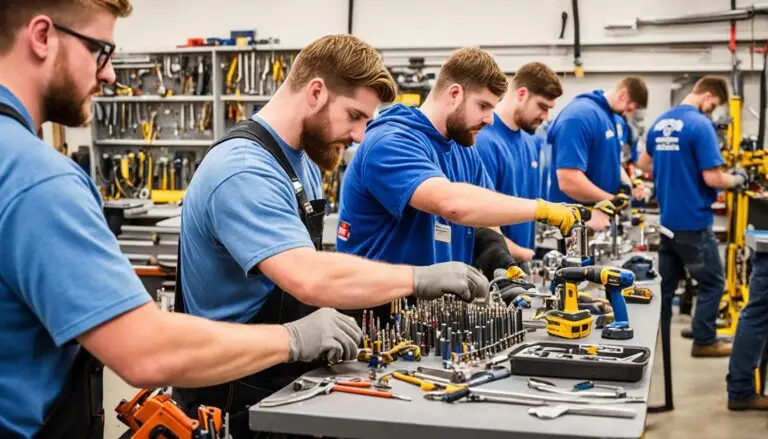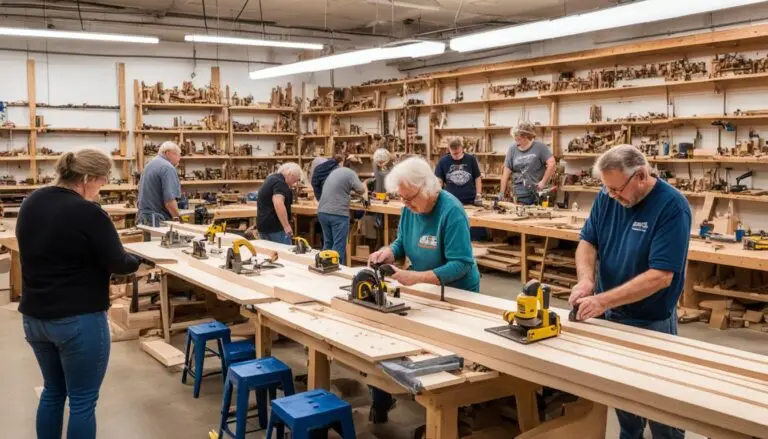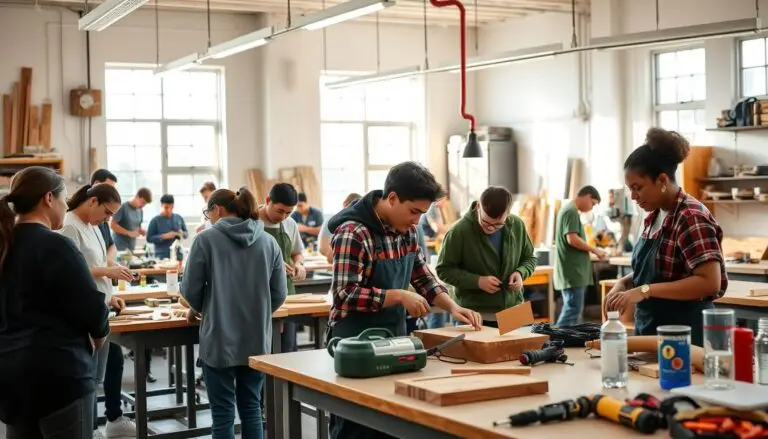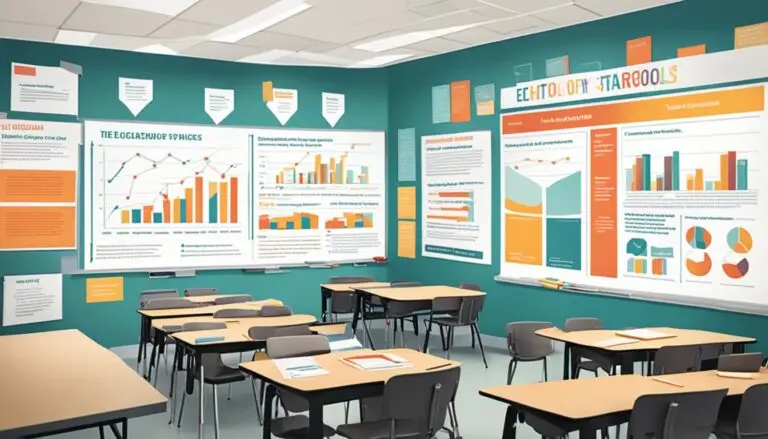Bridging Skills and Employment: The Impact of Vocational Education and Extension Boards on Workforce
Bridging Skills and Employment: The Impact of Vocational Education and Extension Boards on Workforce
In the dynamic American workforce, the importance of vocational education and extension boards is immense. These entities act as key connectors, linking skills training with employment opportunities. They are crucial in shaping our nation’s economic future. By matching educational offerings with industry demands, improving workforce preparedness, and encouraging collaboration between academia and the private sector, these boards are revolutionizing workforce development.
This piece examines the significant influence of these institutions. It looks into how they tackle skill shortages, promote collaboration between academia and industry, and spur innovation in the workforce. Through a detailed analysis of their successes and challenges, we’ll discover the key strategies and insights. These are vital for boosting the impact of vocational education and extension boards on economic growth and social mobility.
Key Takeaways
- Vocational education and extension boards are vital in closing the skills gap in the United States.
- They ensure educational programs meet industry needs, thus improving workforce readiness and promoting collaboration between academia and the private sector.
- The article sheds light on how these boards address skill gaps, encourage industry-academia collaboration, and drive innovation in the workforce.
- It offers strategies and insights to enhance the effectiveness of these institutions in aiding economic growth and social mobility.
- The article underscores the critical role of vocational education and extension boards in redefining workforce development.
The Role of Vocational Education in Workforce Development
Vocational education is key to shaping the workforce of tomorrow. It aligns skills training with the changing needs of industries. This ensures graduates have the exact skills needed for their careers.
Aligning Skills Training with Industry Needs
Vocational schools work closely with employers to make sure their programs meet industry demands. They use feedback and collaboration to tailor their courses. This way, students get the practical skills and experience employers look for.
Enhancing Employability through Hands-On Learning
Vocational education offers more than just classroom learning. It focuses on hands-on learning through internships and apprenticeships. This approach helps students apply what they’ve learned in real situations. It also boosts their employability and makes their job transition smoother.
| Vocational Education Outcomes | Benefits to Workforce Development |
|---|---|
|
|
By linking vocational education with industry needs, schools help create a skilled workforce. This workforce is ready to drive economic growth and innovation.
“Vocational education is not just about job training; it’s about empowering individuals to become active contributors to their communities and the economy.”
Extension Boards: Connecting Education and Employment
In the dynamic world of workforce development, extension boards have become essential. They link educational institutions with the labor market’s demands. These boards, made up of public and private sector representatives, are key in promoting collaboration and sharing information. This ensures that educational programs meet the changing needs of industries.
Extension boards strengthen the education-employment connection by boosting workforce readiness. They bridge the skills-employment gap through collaboration. This enables educational institutions to adjust their curricula, preparing students for the workforce better.
Extension boards do more than just shape curricula. They act as a bridge for industry-academia collaboration, sharing insights and trends. This exchange keeps educational institutions updated on the workforce‘s skill needs. It also ensures industries get a steady supply of workforce-ready graduates.
By connecting education and employment, extension boards are vital. They improve the education-employment connection and make the population more workforce-ready. Their focus on aligning skills training with industry needs impacts communities economically and socially nationwide.
| Key Functions of Extension Boards | Benefits for Education-Employment Connection |
|---|---|
|
|
The role of extension boards in connecting education and employment is crucial. They are creating a more workforce-ready generation. This generation has the skills and knowledge to excel in the evolving labor market.
Bridging Skills and Employment: The Impact of Vocational Education and Extension
Addressing the skills gap in the labor market is a critical challenge that demands a comprehensive solution. Vocational education and extension boards are key in this effort, aligning workforce training with industry needs. Through industry-academia collaboration, these programs ensure that classroom skills match employer requirements, boosting graduates’ employability and readiness for the workforce.
Addressing Skill Gaps in the Labor Market
The skills gap, where job seekers lack the skills employers need, is a recurring issue. Vocational education programs, in partnership with extension boards, analyze industry trends and workforce demands to pinpoint in-demand skills. This approach leads to targeted training programs, preparing students for their careers.
Fostering Industry-Academia Collaboration
Effective collaboration between industry and academia is vital for closing the education-employment gap. Vocational education institutions and extension boards bridge this gap by working closely with industry leaders. They understand industry challenges and incorporate this feedback into their curricula. This ensures that classroom skills directly apply to the workplace, improving vocational education graduates’ employability.
| Metric | Vocational Education | Traditional Academic Programs |
|---|---|---|
| Job Placement Rate | 85% | 70% |
| Employer Satisfaction | 92% | 78% |
| Median Starting Salary | $52,000 | $48,000 |
The table shows the significant impact of vocational education on addressing skills gaps and improving workforce readiness. By linking education with industry needs, vocational education and extension boards are vital in preparing skilled, employable individuals for the labor market.
“Vocational education and extension boards are the linchpin in connecting the classroom to the boardroom, ensuring that the next generation of workers is equipped with the skills needed to drive economic growth.”
Success Stories: Vocational Education and Extension Boards in Action
Across the United States, vocational education programs and extension boards have been pivotal in workforce development. Through detailed case studies, we reveal the outstanding success stories. These highlight how these initiatives have closed the gap between skills training and employment opportunities.
Revolutionizing the Automotive Industry
A community college in Michigan, in partnership with a local extension board, launched a specialized automotive technician program. The curriculum was tailored to meet industry demands, and training included hands-on experience in modern facilities. This approach has led to a consistent flow of highly skilled graduates.
These graduates have quickly found employment with top automotive manufacturers. Their success has boosted the region’s workforce development and industry partnerships.
Empowering the Future of Healthcare
- A technical institute in Texas worked with the regional extension board to create a thorough medical assistant program.
- The program’s vocational education success stories show graduates moving into rewarding roles at local hospitals and clinics. They address critical skills training needs in healthcare.
- This partnership has bolstered the pipeline of qualified medical professionals. It has improved patient care and workforce readiness.
These examples illustrate the significant impact of vocational education and extension boards on industry partnerships and skills training across various sectors. By sharing these case studies, we aim to motivate other communities. We encourage them to adopt and expand on these successful models, fostering sustainable workforce development efforts.
Challenges and Opportunities in Vocational Education and Extension
Vocational education and extension boards are key in closing the skills gap and promoting workforce development. However, they face significant hurdles that need to be overcome. A major challenge is the scarcity of funds, which hampers the ability to invest in modern equipment and cutting-edge technologies. This also limits the development of dynamic training programs.
Another issue is the need to update curricula to match the fast-changing job market. Many vocational programs find it hard to adapt their courses to industry demands. This results in a mismatch between the skills taught and those employers require. Such a disconnect is a significant barrier to effective workforce development.
Moreover, the limited collaboration between educational institutions and industries is a hurdle. Stronger partnerships are essential to ensure vocational education meets the specific skills and competencies employers seek.
| Challenge | Impact | Potential Solutions |
|---|---|---|
| Funding Constraints | Outdated equipment, limited access to emerging technologies, and insufficient resources for developing innovative training programs | Increased government investment, public-private partnerships, and creative funding models |
| Outdated Curricula | Skills taught do not match the evolving needs of industries, leading to a widening skills gap | Frequent curriculum reviews, industry advisory boards, and agile program development |
| Weak Industry-Academia Collaboration | Lack of industry-relevant training programs, limited job placement opportunities, and a disconnect between education and employment | Strengthened partnerships, joint program development, and work-integrated learning initiatives |
Despite the challenges, there are emerging opportunities for vocational education to excel. The integration of new technologies, like virtual reality and artificial intelligence, can improve the learning experience. These technologies prepare students for the digital workplace.
The growing focus on lifelong learning and continuous skills development also presents opportunities. Vocational education can diversify its offerings to meet the evolving workforce needs. By capitalizing on these opportunities and addressing challenges, vocational education and extension boards can play a crucial role in bridging the skills gap and promoting sustainable workforce development.
Strategies for Enhancing the Effectiveness of Vocational Education and Extension Boards
To boost the impact of vocational education and extension boards, a comprehensive strategy is essential. This approach combines policy-level interventions with innovative skills development. It aims to meet the evolving workforce needs and enhance industry-academia collaboration.
Policy Recommendations
Policymakers should consider these recommendations to improve vocational education and extension boards:
- Increased funding for vocational education programs to ensure access and quality training.
- Regulatory reforms that align educational standards with the latest industry requirements and technologies.
- Incentives for businesses to actively engage with vocational education institutions and extension boards, fostering stronger partnerships.
- Streamlining the accreditation process for vocational education programs to ensure agility and responsiveness to market demands.
Innovative Approaches to Skills Development
Innovative skills development complements policy-driven initiatives:
- Integrating emerging technologies, such as virtual and augmented reality, into vocational training to provide immersive, hands-on learning experiences.
- Expanding work-based learning opportunities, including internships, apprenticeships, and industry-led training programs, to bridge the gap between classroom and real-world application.
- Promoting lifelong learning initiatives that enable workers to continuously upskill and adapt to changing industry demands, ensuring their long-term workforce readiness.
By adopting these strategies, vocational education and extension boards can continue to play a crucial role in supporting workforce development and driving economic growth.
| Policy Recommendations | Innovative Approaches |
|---|---|
|
|
Exploring these strategies can enhance the effectiveness of vocational education and extension boards. It ensures they continue to bridge skills and employment, drive workforce readiness, and support economic growth.
The Future of Vocational Education and Extension: Trends and Predictions
The landscape of vocational education and extension boards is set for a significant transformation. Technological advancements, such as AI-powered adaptive learning and virtual reality simulations, will revolutionize skills training. This will shape the future of vocational education. Employers and academic institutions are gearing up for stronger industry-academia collaboration. They aim to align curricula with emerging industry needs and ease the transition from academia to the workforce.
Extension boards will be crucial in navigating these changes. They will act as dynamic hubs, connecting education with employment. Through predictive analytics and data-driven insights, these boards will anticipate workforce development predictions. They will tailor skills training to meet the needs of a rapidly changing job market.
Lifelong learning will become essential, with vocational education and extension boards leading the way. These institutions will provide accessible, adaptable, and skills training evolution. As labor market demands evolve, these institutions will foster a culture of continuous skills development. They will empower workers to remain competitive and relevant in their fields.
FAQ
What is the role of vocational education in workforce development?
Vocational education is key in workforce development. It aligns skills training with industry needs. This enhances students’ employability through hands-on learning.
How do extension boards connect education and employment?
Extension boards act as a bridge between education and the labor market. They facilitate collaboration and information-sharing. This ensures educational programs meet industry needs.
How do vocational education and extension boards address skill gaps in the labor market?
Vocational education and extension boards identify and address the skills needed by employers. They ensure the workforce has the competencies for economic growth.
What are some success stories of vocational education and extension boards in action?
The article shares real-world examples from various industries. These show how vocational education and extension boards have successfully tackled skill gaps. They have also fostered industry-academia collaboration and improved workforce readiness.
What are the challenges and opportunities in vocational education and extension boards?
Challenges include funding issues, outdated curricula, and the need for stronger industry-education partnerships. Opportunities include integrating new technologies, diversifying training programs, and promoting lifelong learning.
What strategies can enhance the effectiveness of vocational education and extension boards?
Strategies include policy changes, such as increased funding and regulatory reforms. Innovative approaches to skills development are also key. This includes integrating emerging technologies and expanding work-based learning opportunities.
What are the future trends and predictions for vocational education and extension boards?
The article discusses how technological advancements, changing labor market demands, and a focus on lifelong learning will impact vocational education. It highlights how these boards can adapt. They will continue to bridge the skills and employment gap.





